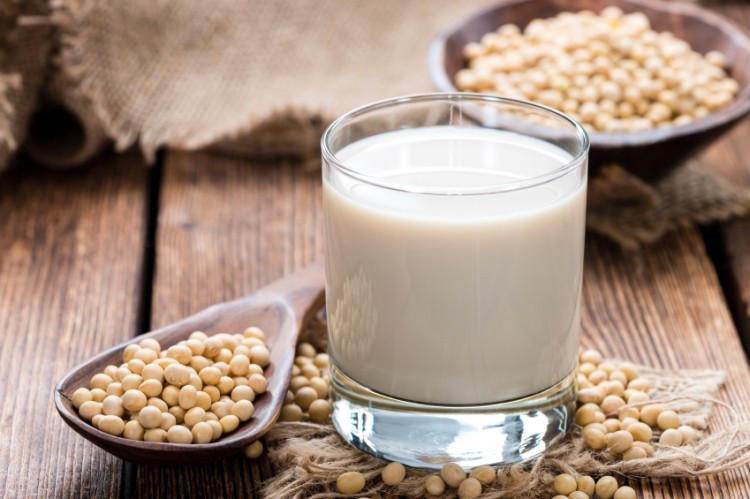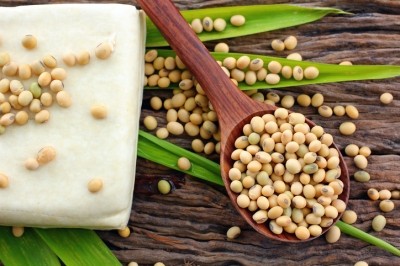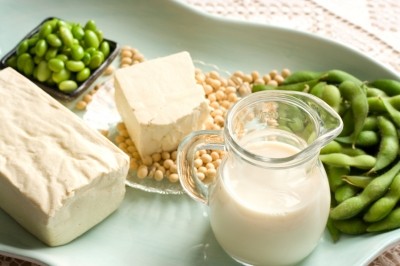Fermented soymilk isoflavones could cut UV damage

Researchers from the Yakult Central Institute in Japan tested female hairless mice, feeding groups of six soymilk (SM) or fermented soymilk (FSM), with additional untreated and control groups. They found mice fed on FSM showed less skin reddening and skin thickening compared to those fed on regular soymilk.
“Oral administration of a fermented soymilk diet increases isoflavone concentrations in the blood and skin, effectively scavenging the reactive oxygen species generated by UV irradiation […] with a consequent protective effect on skin photodamage in hairless mice,” the authors wrote in the journal Nutrients.
Fermented soymilk more effective
They said that while unfermented soymilk gave some protection, “the protective effects were more potent in the FSM diet group […] However, FSM and SM had no effect on the skin (skin thickness and erythema) under the non-UV irradiation condition”.
The researchers found that isoflavone concentrations in the blood and UV-exposed skin were significantly higher in the FSM group compared to the SM mice.
They had previously found isoflavone absorption is higher for subjects fed aglycone-enriched FSM compared to glucoside-enriched SM.
“However, there was no difference in the concentration of equol between the two groups, which is reported to be the most potent of all isoflavones, although the concentrations of genistein and daidzein in the serum and dorsal skin were higher in the FSM group than in the SM group,” they wrote.
“Hence, we believe that the higher delivery of genistein and daidzein to the serum and dorsal skin is due to differences in effectiveness between FSM and SM,” they added.
‘Oestrogen-like activity’ of isoflavones
The mice had their ovaries removed prior to being tested, as a preliminary experiment showed ovariectomised mice were more susceptible to UV skin damage. The researchers speculated that isoflavones were exerting “oestrogen-like activity” in the mice in the main experiments.
“Oestrogen depletion by ovariectomy might increase the sensitivity of hairless mice to UVB irradiation and erythema as an inflammatory response. These findings support the observation that oestrogen insufficiency decreases defences to oxidative stress,” the researchers wrote.
“Because of their similar structures, isoflavones exert oestrogen-like activity and can protect against hormone-dependent diseases. We believe that the oestrogen-like activity of isoflavones from FSM partly compensates for the oestrogen depletion in [ovariectomised] hairless mice, preventing the photodamage induced by UVB irradiation,” they added.
Source: Nutrients
Published online ahead of print, doi: 10.3390/nu8080514
“Oral Administration of Fermented Soymilk Products Protects the Skin of Hairless Mice against Ultraviolet Damage”
Authors: Kano, M; Kubota, N; Masuoka, N; Hori, K; Miyazaki, K; Ishikawa, F























